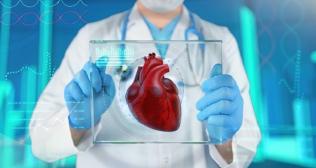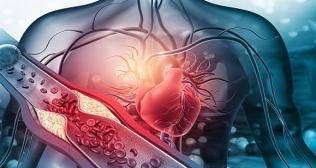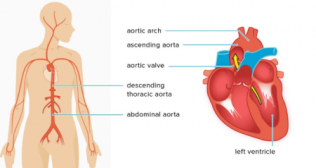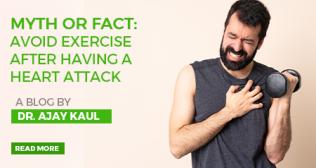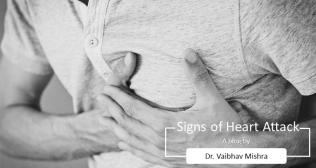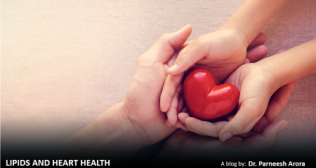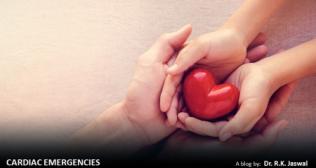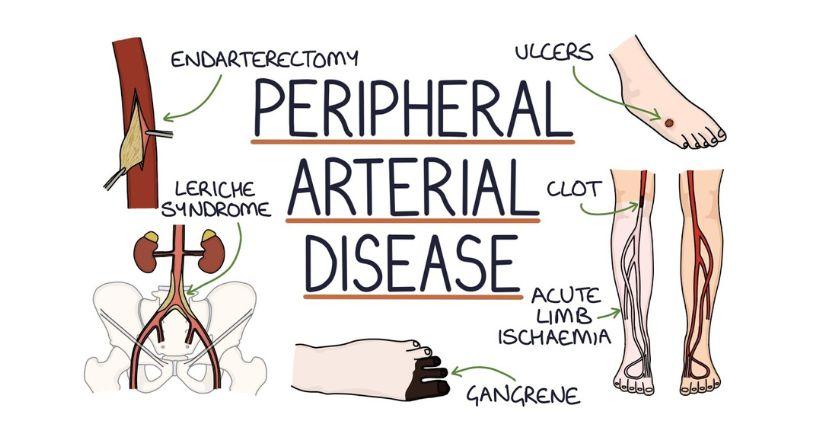
Peripheral Artery Disease (PAD): Symptoms and Treatment
Peripheral artery disease is a circulatory abnormality and a serious condition that occurs when arteries that supply blood to lower limb, especially the legs is narrowed or occluded. It is often a resultant of atherosclerosis or fatty plaque build-up on the walls of arteries. PAD when left unattended, can cause severe pain, difficulty in walking and more serious complications such as tissue damage or amputation. On a widespread note, due to accumulation of fatty deposits in the arteries, PAD may often complicate and raises risk for heart attack and stroke. Diagnosis includes tests like ankle-brachial index (ABI) or Doppler ultrasound and treatment options range from lifestyle changes as well as medications to surgical interventions, depending on the severity of the condition.
Causes as well as Risk Factors of Peripheral Artery Disease:
PAD develops when arteries narrow owing to plaque formation, compromising blood flow. The primary cause of this narrowing is atherosclerosis, which occurs when cholesterol, fat, calcium, and other chemicals create plaques on the arterial walls. Plaques build in the arteries, reducing their ability to carry oxygen-rich blood to muscles and tissues.
Several Factors that increase risk for developing Peripheral Artery Disease are –
Smoking
Damage to inner lining of artery wall accelerates atherosclerosis and PAD risk.
Diabetes
High blood sugar may synergise the damage to blood vessels, significantly increasing PAD risk.
High Blood Pressure
This can contribute to narrowing and hardening of arteries, leading to reduced blood flow to lower extremities.
High Cholesterol
Elevated triglycerides and low-density lipoproteins may contribute to plaque formation.
Age
PAD is more common in individuals aged above 50 and gradually increases as the age progresses.
Family History
Having a family history of high cholesterol, high blood pressure etc may increase the likelihood of developing PAD.
Sedentary Lifestyle
Physical inactivity may lower blood supply to lower extremities and may additionally worsen condition by increasing risk for diabetes and hypertension.
Obesity
Excessive body weight strains cardiovascular system as well as increases risk factors such as diabetes and high cholesterol.
Chronic Kidney Disease may accelerate the hardening of arteries and can elevate the risk of PAD.
Symptoms of Peripheral Artery Disease:
Asymptomatic in early stages, PAD presents with some peculiar signs as the condition progresses. The most common symptom include – cramping pain in the legs or arms triggered by activities like walking or climbing stairs. The pain usually subsides on rest and recurs on physical activity.
Other symptoms include –
1. Leg pain at rest in serious cases particularly in feet and toes.
2. Numbness/weakness in legs due to compromised blood supply
3. Coldness in lower leg/foot due to reduced circulation.
4. Weak pulse/absence of pulse due to restricted blood flow.
Diagnostic Tests:
Diagnostic tests to confirm PAD are –
1. Ankle-Brachial Index: This is the most commonly used test for PAD. It compares blood pressure in the ankle and the arm. A substantial variation suggests that the legs do not receive adequate blood flow.
2. Doppler Ultrasound: This non-invasive investigation employs sound waves to visualise blood flow via the arteries and identify blockages or constriction.
3. Angiography: This test can indicate precise position and extent of obstruction to the arteries.
4. Magnetic Resonance Angiography: This test provides detailed images of the blood vessels, helping to identify blockages/narrowing.
5. Blood Test: Blood testing can help identify risk factors such excessive cholesterol, diabetes, and inflammation, all of which can contribute to the development of PAD.
Complications of PAD:
If not addressed, PAD can lead to a series of complications. Compromised blood flow to the peripheries can lead to –
1. Critical Limb Ischemia: Lack of blood supply to the limbs may result in sores, infections, and in extreme cases, tissue death. Critical Limb Ischemia may require limb amputation.
2. Heart Attack/Stroke: PAD is often a sign of widespread atherosclerosis and may result in heart attack or stroke.
3. Non-Healing Ulcers: Inadequate blood supply may lead to non-healing ulcers on hands and legs, which may also turn infected.
4. Reduced Mobility: Pain and discomfort may lead to reduced mobility and can have a significant impact on person’s overall quality of life.
Treatment of PAD:
Treatment for PAD aims to alleviate symptoms, slow disease progression, as well as lower the risk of complications. The treatment technique is determined by the condition's severity and the patient's general health. Options include:
1. Lifestyle Changes: Lifestyle changes can greatly reduce PAD symptoms. These changes include smoking cessation, eating a heart-healthy diet, exercising regularly, and managing diabetes and hypertension.
2. Medications: Medical management of PAD include
a. Antiplatelet Drugs – Aspirin or Clopidogrel to reduce risk of clots.
b. Cholesterol Lowering Medications – Statins to lower LDL cholesterol and plaque build-up.
c. Blood Pressure Medications – To reduce strain on arteries.
d. Cilostazol or Pentoxifylline: These drugs can help relieve intermittent claudication by improving blood flow to the limbs.
3. Surgical Management: For severe cases, surgery may be necessary. Options include –
a. Angioplasty and Stenting.
b. Bypass Surgery.
4. Follow ups: Regular monitoring by healthcare experts serves as vital for tracking illness progression, adjusting treatment strategies, and lowering the risk of consequences. Patients may require periodic ABI tests, as well as routine blood pressure and cholesterol monitoring.
Conclusion:
Peripheral artery disease is a serious ailment that, if not treated, can have a substantial impact on quality of life. Early detection of symptoms, lifestyle modifications, as well as medicinal therapies can all help control the illness and lower the chance of consequences like a heart attack, stroke, or limb loss. If you have signs of PAD, including as leg pain or poor wound healing, you should get medical attention and investigate your treatment options.
Popular Searches :
Hospitals: Cancer Hospital in Delhi | Best Heart Hospital in Delhi | Hospital in Amritsar | Hospital in Ludhiana | Hospitals in Mohali | Hospital in Faridabad | Hospitals in Gurgaon | Best Hospital in Jaipur | Hospitals in Greater Noida | Hospitals in Noida | Best Kidney Hospital in Kolkata | Best Hospital in Kolkata | Hospitals in Rajajinagar Bangalore | Hospitals in Richmond Road Bangalore | Hospitals in Nagarbhavi Bangalore | Hospital in Kalyan West | Hospitals in Mulund | Best Hospital in India | | Cardiology Hospital in India | Best Cancer Hospital in India | Best Cardiology Hospital in India | Best Oncology Hospital In India | Best Cancer Hospital in Delhi | Best Liver Transplant Hospital in India
Doctors: Dr. Rana Patir | Dr. Rajesh Benny | Dr. Rahul Bhargava | Dr. Jayant Arora | Dr. Anoop Misra | Dr. Manu Tiwari | Dr. Praveer Agarwal | Dr. Arup Ratan Dutta | Dr. Meenakshi Ahuja | Dr. Anoop Jhurani | Dr. Shivaji Basu | Dr. Subhash Jangid | Dr. Atul Mathur | Dr. Gurinder Bedi | Dr. Monika Wadhawan | Dr. Debasis Datta | Dr. Shrinivas Narayan | Dr. Praveen Gupta | Dr. Nitin Jha | Dr. Raghu Nagaraj | Dr. Ashok Seth | Dr. Sandeep Vaishya | Dr. Atul Mishra | Dr. Z S Meharwal | Dr. Ajay Bhalla | Dr. Atul Kumar Mittal | Dr. Arvind Kumar Khurana | Dr. Narayan Hulse | Dr. Samir Parikh | Dr. Amit Javed | Dr. Narayan Banerjee | Dr. Bimlesh Dhar Pandey | Dr. Arghya Chattopadhyay | Dr. G.R. Vijay Kumar | Dr Ashok Gupta | Dr. Gourdas Choudhuri | Dr. Sushrut Singh | Dr. N.C. Krishnamani | Dr. Atampreet Singh | Dr. Vivek Jawali | Dr. Sanjeev Gulati | Dr. Amite Pankaj Aggarwal | Dr. Ajay Kaul | Dr. Sunita Varma | Dr. Manoj Kumar Goel | Dr. R Muralidharan | Dr. Sushmita Roychowdhury | Dr. T.S. MAHANT | Dr. UDIPTA RAY | Dr. Aparna Jaswal | Dr. Ravul Jindal | Dr. Savyasachi Saxena | Dr. Ajay Kumar Kriplani | Dr. Nitesh Rohatgi | Dr. Anupam Jindal |
Specialties: Heart Lung Transplant | Orthopedic | Cardiology Interventional | Obstetrics & Gynaecology | Onco Radiation | Neurosurgery | Interventional Cardiology | Gastroenterologist in Jaipur | Neuro Physician | Gynecologist in Kolkata | Best Neurologist in India | Liver Transfer







